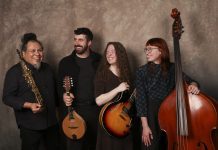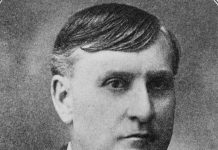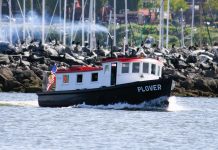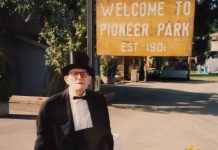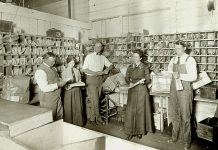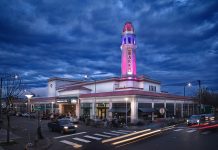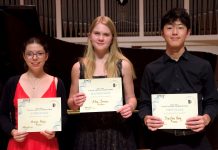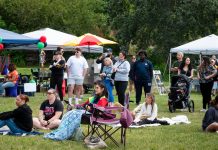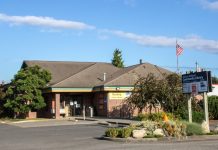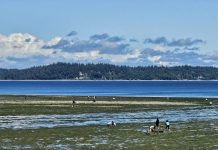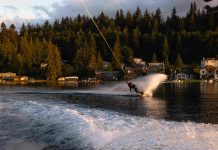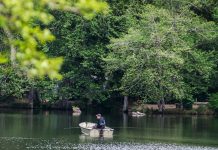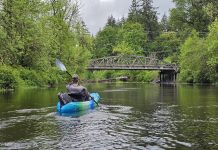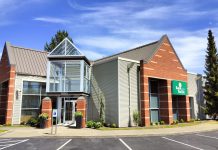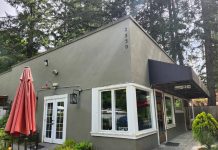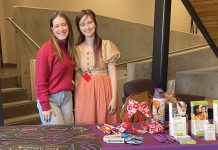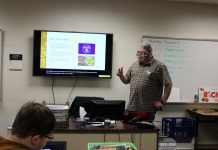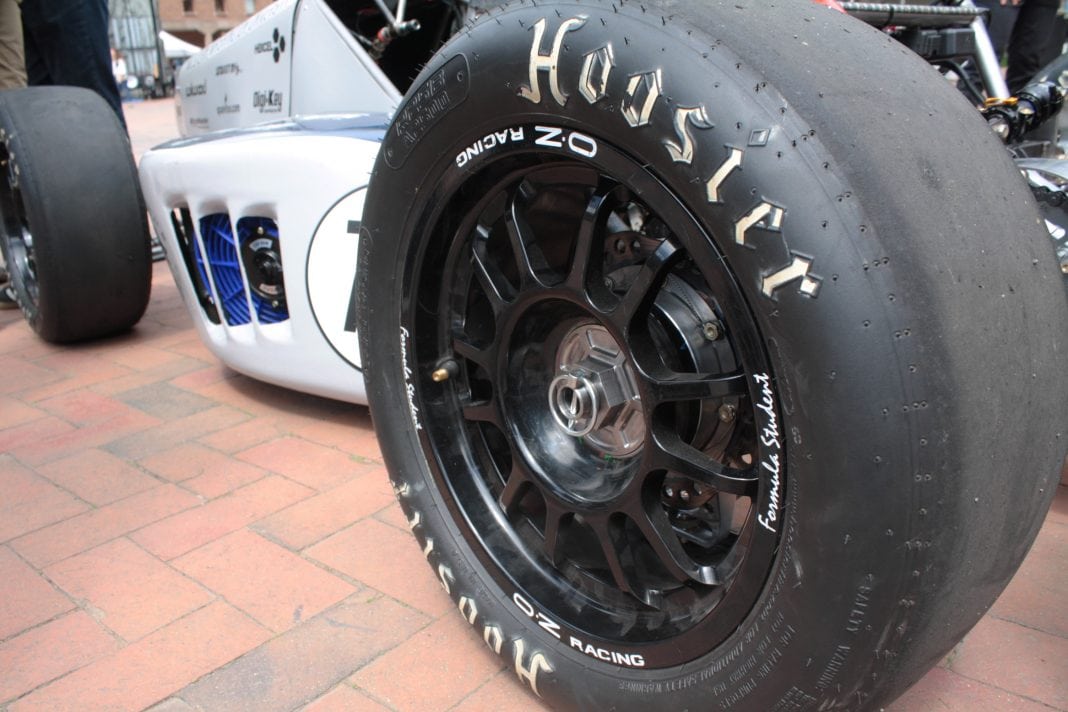Each third week of June, just after the academic year ends, a dedicated band of Western Washington University students drive approximately 1,700 miles to Lincoln, Nebraska.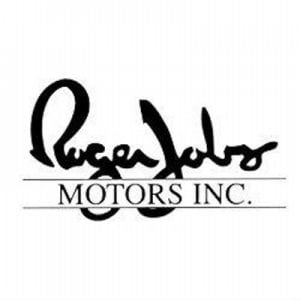
Their mission: be the best of nearly 100 teams competing in Formula SAE West, one of several nationwide engineering design competitions created by SAE (Society of Automotive Engineers) International.
Each team spends their academic year creating a single-seat, open-wheel-style race car and a business plan. At the competition they put their work to the test through engineering and business-related challenges. The process gives students a chance to test their classroom knowledge in a real-world setting, helping prepare them for life in the engineering industry after graduation.

Senior Michael Konig, WWU Racing’s current project manager, says the club was founded in the late 1980s. Since transferring to Western during his sophomore year, he’s seen the club expand from barely 10 members to a current roster of 45.
Konig attributes the growth to changes in the team’s structure and atmosphere, making it more inclusive to all majors. While primarily the territory of those in engineering and business, Konig notes the club’s academic diversity now includes English and environmental science majors.

Last year Adam Hess joined WWU Racing because he’s always enjoyed building things. As the team’s chassis manufacturing director and lead welder, he’s gotten a ton of hands-on experience doing what he loves. Hess welded about 90 percent of the chassis on this year’s car and also teaches the club’s fabrication and welding classes.
“There’s no other club on campus that can give you anything like this,” he says. “The team atmosphere is incredible. It’s a great group of people, and the experience and the skills you will learn will take you really far. And it looks great on resumes.”
For those focusing on the non-mechanical side of things, Konig says the value business majors glean from the project is immense. “We bring in about 40 to 50 thousand dollars a year,” he says. “Then we spend it all, and we have to justify those expenditures and keep track of everything. As opposed to other business clubs on campus, where it’s all theoretical, this is an actual business model.”
A Strong, Well-Performing Car

The team’s current car, Viking 59, is the nineteenth built for Formula SAE competition and, as the name implies, is the fifty-ninth vehicle to emerge from Western’s Vehicle Research Institute lab.
With the exception of the engine, the tires and a few other components, the entire car is designed and manufactured in-house. The most dedicated students, like Hess, spend upwards of 60 hours a week working on the car, all while balancing classes and personal lives.
“It’s a full-time job,” says Konig, noting that for all the effort, there’s no financial compensation or college credit to be gained. The hope, he says, is that the project helps lead students to good-paying jobs after graduation. For Konig, that seems to have panned out; he’s landed a gig as a project manager for a prototype engineering firm in Southern California.
This year’s car has a 600cc, four-cylinder Honda motorcycle engine. It makes 80 horsepower and weighs about 480 pounds, providing a decent power-to-weight ratio. Konig says it’ll go zero-to-60 in about three seconds and is capable of over 100 mph, though it’s typically only driven around 50 to 60. “It’s a very strong, well-performing car,” he says.

The most notable change from last year’s entry is the switch from a carbon fiber to steel-tube chassis. The change allowed the club to speed up their manufacturing process and, for the first time in five years, finish the project on-time.
The extra time has allowed for more testing. So far, Konig says they’ve put in over 60 hours, including about four hours of drive time at the Bellingham airport, where the car is put through its paces. That’s an accomplishment, considering that in some years the car wasn’t even driven prior to being in competition.
So, what’s it like to drive?
Hess says it’s a little bit like a go-cart, with some major differences. “It’s much faster,” he says. “Corners are harder.” It’s a remarkable machine.
Survival of the Fittest

The competition is split into several categories, starting with perhaps the most unforgiving of all: tech inspection.
Each car must fit driver and safety templates. If they don’t pass tech, the team is disqualified from competing – no matter how far they’ve driven to be there. For teams that do pass, cars are then subjected to a physical design review, an analysis of the car’s production cost, and a marketing and distribution presentation to a group of theoretical investors, if the car were mass-produced for amateur racing consumers.
Over the final two days of the competition, there are four driving tests: acceleration, where teams see how fast their car can go in a straight line over a given distance; skid pad, where suspension and g-loads are tested by seeing how tight a turn radius their car has; autocross, a single road course-style lap taken in a large parking lot with cones; and finally, endurance, where cars must be driven for 15 minutes, undergo a driver change, be re-fired and then driven another 15 minutes. Konig says the endurance portion tends to be the hardest for most teams, seeing a completion rate of only 20 to 30 percent. Last year, WWU finished tenth in the category.
“It doesn’t really seem like a lot,” he says. “People do 30-minute drives all the time. But for any student-built race car driven by students, it’s really strenuous.”
As for who gets to drive, the team picks four members based on three factors: experience, driving ability and time put into the car, the latter of which weighs most heavily into the decision.
WWU Racing receives no university funds to build their cars and must rely on outside sponsorships, working with local companies to get money, materials or services for the project. Help this year came from a number of partners, including local Porsche dealer Roger Jobs and Seattle-based Pacific NW Region Porsche Club of America, the latter of which is their biggest financial supporter.
Konig says those interested in sponsorships should visit the team’s website.
With just a few weeks until the competition, Konig feels confident about their chances for success, hopefully improving upon last year’s 17th place overall finish. For Hess, after all the hours of work, it’s a treat just to be attending – even if it does take place in Nebraska in June. “It’s hot, and it’s miserable,” he says. “And yet it’s one of the most fun things I’ve ever done and it’s one of the most memorable things I’ve ever done.”




